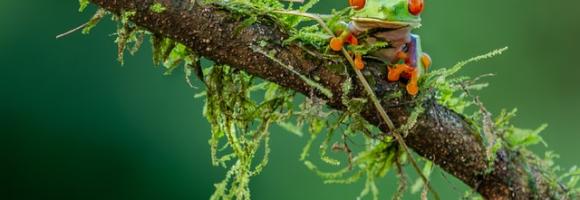
Indicator unit: Counting of the number of endemic amphibians at site and country levels.
Area of interest: Species lists are generated for each terrestrial and coastal protected area, and are provided in BIOPAMA for all protected areas of size ≥ 1 km2, and for protected portion of countries. General statistics are reported at country level, species richness is mapped at global level.
Policy question: Where are the areas in the world hosting most species? How many species in a country have their ranges covered at least partially by protected areas? How many threatened species are endemic and how many of these have their ranges protected? Where are the main gaps in terms of species observations? These are key questions for assessing whether conservation measures have been taken to prevent extinctions on to measuring progress on Aichi Targets 11 and 12 of the Convention on Biological Diversity (CBD).
---
Data Uploaded by Luca Battistella using the Digital Observatory for Protected Areas Services (2022)
Number of Endemic Amphibians
Species assessed by the International Union for the Conservation of Nature (IUCN) and documented in the IUCN Red List of Threatened Species TM (RLTS) have been used to calculate country summary statistics on the number of endemic and threatened species (IUCN, 2020).
Species included in the Red List are classified into the following categories based on Red List criteria such as rate of decline, population size, area of geographic distribution, and degree of population and distribution fragmentation:
Threatened species fall into one of the following three categories:
1) Critically Endangered (CR) – Extremely high risk of extinction in the wild.
2) Endangered (EN) – High risk of extinction in the wild. 3) Vulnerable (VU) – High risk of endangerment in the wild.
Country lists of (protected) Threatened (Critically Endangered, Endangered, Vulnerable) and Near Threatened species are derived by the previously described overlay within protected areas and species ranges,aggregating the results by the ISO3 code reported for the Protected Area by WCMC.
See http://www.iucnredlist.org/ for more details.
Number of Endemic Species in PA
Species assessed by the International Union for the Conservation of Nature (IUCN) and documented in the IUCN Red List of Threatened Species TM (RLTS) have been used to calculate country summary statistics on the number of endemic and threatened species (IUCN, 2020).
Species included in the Red List are classified into the following categories based on Red List criteria such as rate of decline, population size, area of geographic distribution, and degree of population and distribution fragmentation:
Threatened species fall into one of the following three categories:
1) Critically Endangered (CR) – Extremely high risk of extinction in the wild.
2) Endangered (EN) – High risk of extinction in the wild. 3) Vulnerable (VU) – High risk of endangerment in the wild.
Country lists of (protected) Threatened (Critically Endangered, Endangered, Vulnerable) and Near Threatened species are derived by the previously described overlay within protected areas and species ranges,aggregating the results by the ISO3 code reported for the Protected Area by WCMC.
See http://www.iucnredlist.org/ for more details.
Number of Endemic Amphibians
Species assessed by the International Union for the Conservation of Nature (IUCN) and documented in the IUCN Red List of Threatened Species TM (RLTS) have been used to calculate country summary statistics on the number of endemic and threatened species (IUCN, 2020).
Species included in the Red List are classified into the following categories based on Red List criteria such as rate of decline, population size, area of geographic distribution, and degree of population and distribution fragmentation:
Threatened species fall into one of the following three categories:
1) Critically Endangered (CR) – Extremely high risk of extinction in the wild.
2) Endangered (EN) – High risk of extinction in the wild. 3) Vulnerable (VU) – High risk of endangerment in the wild.
Country lists of (protected) Threatened (Critically Endangered, Endangered, Vulnerable) and Near Threatened species are derived by the previously described overlay within protected areas and species ranges,aggregating the results by the ISO3 code reported for the Protected Area by WCMC.
See http://www.iucnredlist.org/ for more details.